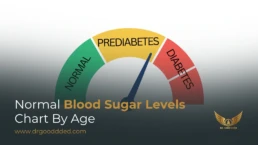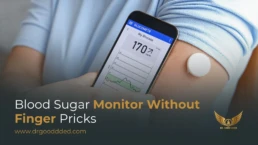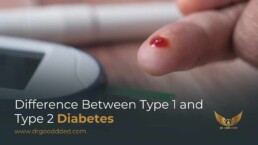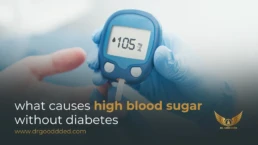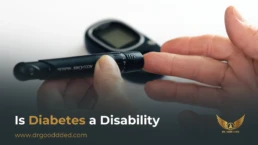Type 3c diabetes is a lesser-known but very real form of diabetes that develops when the pancreas is damaged. This damage prevents your body from making enough insulin and digestive enzymes. Unlike Type 1 or Type 2 diabetes, this type comes from physical harm to the pancreas itself.
Table of Contents
ToggleMany people have it without even realizing it, because doctors often mistake it for Type 2. Let’s understand this often-misunderstood condition in detail.
Understanding Type 3c Diabetes (Pancreatogenic Diabetes)Blood Sugar Level
When you think of diabetes, you might think of high blood sugar and insulin. Type 3c diabetes is a type of diabetes that develops after your pancreas gets injured or diseased. The pancreas is a small organ that sits behind your stomach. It makes insulin (to control blood sugar) and digestive enzymes (to break down food).
When the pancreas gets damaged by illness, inflammation, or surgery, both of these functions can fail. That’s when Type 3c diabetes develops.
People with Type 3c not only struggle with blood sugar levels but also with digestion. This combination makes it much harder to control than Type 2 diabetes.
What Makes Type 3c Diabetes Different?
The key difference is that type 3c diabetes starts because of pancreatic damage. In other types of diabetes, the pancreas is still there and working at least partly. But in type 3c, it’s physically harmed.
Because of that, your body doesn’t produce enough insulin and can’t digest food properly. This means you can have unstable sugar levels and poor absorption of nutrients at the same time. Blood sugar can swing from very low to very high, which makes it tricky to manage.
The Role of the Pancreas in Blood Sugar Regulation
To understand Type 3c diabetes , you must know what the pancreas does. The pancreas has special cells called beta cells that make insulin. Insulin helps move sugar from your blood into your cells.
When your pancreas is injured, those beta cells stop working. It also stops making digestive enzymes that break down fat and protein. Without those enzymes, your body can’t absorb nutrients properly, leading to weight loss, bloating, and vitamin deficiencies.
How Common Is Type 3c Diabetes?
Type 3c diabetes is more common than most people realize. Studies show that around 5 to 10% of all diabetes cases might actually be Type 3c, but most are misdiagnosed as Type 2. That’s because both types share similar blood sugar levels. The difference is in the cause; type 3c always comes from pancreatic problems.
What Causes Type 3c Diabetes?
Chronic Pancreatitis – The Most Common Cause
Chronic pancreatitis is long-term inflammation of the pancreas. Over time, inflammation scars the organ and destroys the insulin-producing cells. People who drink heavily, smoke, or have genetic problems may get this disease. Chronic pancreatitis is the leading cause of Type 3c diabetes caused by pancreatic damage.
Pancreatic Cancer and Surgery (Pancreatectomy)
Cancer in the pancreas can also destroy insulin-producing cells. Sometimes, surgery is needed to remove part or all of the pancreas (pancreatectomy). Once tissue is removed, the remaining part may not make enough insulin or enzymes, leading to diabetes.
Many people who undergo pancreatic surgery later develop Type 3c diabetes because their body simply doesn’t have enough functioning pancreatic cells left.
Other Underlying Conditions
Other illnesses can also harm the pancreas. These include cystic fibrosis (a genetic disease that affects mucus and digestion), hemochromatosis (too much iron in the body), and autoimmune pancreatitis. These conditions slowly damage the pancreas and increase your risk of developing diabetes.
Lifestyle and Risk Factors
Lifestyle habits can also play a big role. Long-term alcohol use, high-fat diets, and smoking can lead to inflammation in the pancreas. Frequent gallstones can block ducts and trigger pancreatitis. While not everyone with these risks develops diabetes, they make the pancreas more likely to fail over time.
Symptoms Of Type 3c Diabetes
Classic Diabetes Symptoms
The first signs of Type 3c diabetes may look like other forms of diabetes. You may feel thirsty all the time, urinate often, lose weight without trying, or feel very tired. These are standard diabetes symptoms that happen when sugar builds up in your blood.
Digestive-Related Symptoms (Unique to Type 3c)
This type of diabetes also brings digestive problems that Type 1 and Type 2 don’t usually cause. Because your pancreas doesn’t make enough enzymes, food doesn’t digest well. You may have bloating, oily or smelly stools, and stomach discomfort. Some people lose weight quickly even when they eat enough. This is a major clue that you might have Type 3c diabetes and not another kind.
Signs You Might Have Prediabetes Before Type 3c Develops
You can sometimes see signs of prediabetes before Type 3c fully develops. You might have mild high blood sugar but no symptoms yet. Small clues like thirst, fatigue, or mild weight loss can appear. Catching these early helps prevent serious blood sugar swings later.
How Is Type 3c Diabetes Diagnosed?
Why It’s Often Misdiagnosed As Type 2 Diabetes
Because Type 3c diabetes looks like Type 2 on blood tests, doctors often mislabel it. The real cause, pancreatic damage, gets overlooked. This is dangerous because treatment for Type 3c is not the same as Type 2.
People with Type 3c need enzyme supplements, not just insulin or tablets. If only the sugar side is treated, the person continues to lose weight and feel weak.
Key Diagnostic Tests
To diagnose Type 3c diabetes , doctors may order several tests:
- Blood sugar tests: Fasting glucose and HbA1c (average blood sugar over 3 months).
- Pancreatic enzyme tests: To see if your pancreas is making enough digestive enzymes.
- Imaging: CT scan or MRI to view any damage or scarring.
- Autoantibody tests: To rule out Type 1 diabetes.
If you have low enzyme levels and clear pancreatic damage, your doctor will confirm it as Type 3c diabetes.
Differentiating Type 3c From Other Types
The difference lies in the root cause:
| Type | Cause | Insulin Production | Digestion Problems |
| Type 1 | Autoimmune (body attacks the pancreas) | Very low | No |
| Type 2 | Insulin resistance | Normal to low | No |
| Type 3c | Pancreas damage | Low | Yes |
This table helps you understand how different types of diabetes vary from each other.
Managing And Treating Type 3c Diabetes
The Dual Challenge — Glucose And Digestion
Managing Type 3c diabetes means controlling blood sugar and fixing digestion at the same time. You’ll likely need both insulin and pancreatic enzyme replacement therapy (called PERT). The enzyme pills help your body absorb nutrients, while insulin keeps your blood sugar steady.
Medical Management
Most people with Type 3c need insulin shots. Some may start with oral medicines, but these often stop working. Doctors may also prescribe enzyme supplements to replace what the pancreas can’t make. Regular check-ups are essential to adjust doses and avoid low blood sugar attacks.
Dietary Guidelines
A diet for Type 3c diabetes should be easy on digestion. You should:
- Eat small, frequent meals.
- Include lean protein (chicken, eggs, tofu).
- Add healthy fats (avocado, olive oil).
- Avoid alcohol completely.
- Take enzyme pills with every meal to help absorb fat and vitamins.
A dietitian can help you plan balanced meals that control sugar and prevent nutrient loss.
Lifestyle Modifications
Quit smoking and drinking alcohol to prevent further pancreatic damage. Light exercise, like walking or swimming, helps your body use insulin better. These simple steps can greatly improve your quality of life.
Monitoring For Complications
People with Type 3c diabetes face risks similar to other diabetes types, such as eye, kidney, and nerve problems. But they also risk malnutrition because of poor digestion. Regular eye exams, blood tests, and nutrition checks are vital.
Prevention And Early Intervention
Can Type 3c Diabetes Be Prevented?
While you can’t always prevent it, you can lower your risk. Avoid alcohol abuse, maintain a healthy weight, and manage gallstones early. Treating pancreatitis quickly can stop the pancreas from getting worse. Understanding what causes diabetes of this kind helps you take preventive steps early.
The Importance Of Early Diagnosis
Catching Type 3c early helps avoid long-term damage. Once doctors know your pancreas is involved, they can start enzyme therapy and insulin sooner. This improves digestion and keeps your sugar steady.
Living With Type 3c Diabetes
Coping With A Dual Condition
Living with Type 3c diabetes can feel overwhelming because you manage two conditions—blood sugar and digestion. But small habits make a big difference. Keep a food and sugar diary. Track what meals make your sugar rise or fall. That helps your doctor adjust treatment.
Emotional & Mental Health
Feeling anxious or frustrated is normal when you have a chronic illness. Talk openly with your doctor or counselor. Joining a diabetes support group helps you share tips and feel less alone.
Building A Support System
Tell your family and friends what to do if your blood sugar drops too low. Keep glucose tablets with you at all times. Having people who understand your condition can be life-saving.
When To See Your Doctor
Symptoms That Require Urgent Attention
Get medical help right away if you feel dizzy, faint, or confused. These may be signs of low blood sugar. Also, seek care if you have severe stomach pain or vomiting, which could mean new pancreatic problems.
Routine Monitoring Is Key
Visit your doctor at least every six months for checkups. Regular blood sugar, vitamin, and enzyme tests help keep everything under control.
FAQs
What Is Type 3c Diabetes?
Type 3c diabetes is a kind of diabetes that develops after your pancreas gets damaged. It causes both blood sugar problems and digestive issues, making it different from other types.
What Causes Type 3c Diabetes?
Type 3c diabetes is caused by conditions like chronic pancreatitis, pancreatic cancer, or pancreatic surgery. These destroy the cells that make insulin and digestive enzymes.
How Is Type 3c Different From Type 1 Or Type 2 Diabetes?
Type 3c comes from physical pancreas damage, while Type 1 is autoimmune, and Type 2 results from insulin resistance. It often causes both sugar and digestion problems.
What Are The Symptoms Of Type 3c Diabetes?
You may notice diabetes symptoms like thirst and fatigue, along with digestive issues like bloating, oily stools, and sudden weight loss. Both happen because your pancreas can’t function fully.
How Is Type 3c Diabetes Treated?
It’s treated with insulin, enzyme replacement, and a healthy diet. Managing both digestion and blood sugar helps prevent complications.
Can Type 3c Diabetes Be Reversed Or Prevented?
You can’t fully reverse it, but you can slow it down. Treating pancreatic problems early and avoiding alcohol helps. Understanding what causes diabetes helps lower future risk.
Is Type 3c Diabetes Life-Threatening?
Yes, if untreated, it can lead to severe sugar swings, malnutrition, and organ damage. With the right treatment plan, most people live healthy and stable lives.

This article is medically reviewed by Dr. Nivedita Pandey, Senior Gastroenterologist and Hepatologist, ensuring accurate and reliable health information.
Dr. Nivedita Pandey is a U.S.-trained gastroenterologist specializing in pre and post-liver transplant care, as well as managing chronic gastrointestinal disorders. Known for her compassionate and patient-centered approach, Dr. Pandey is dedicated to delivering the highest quality of care to each patient.



